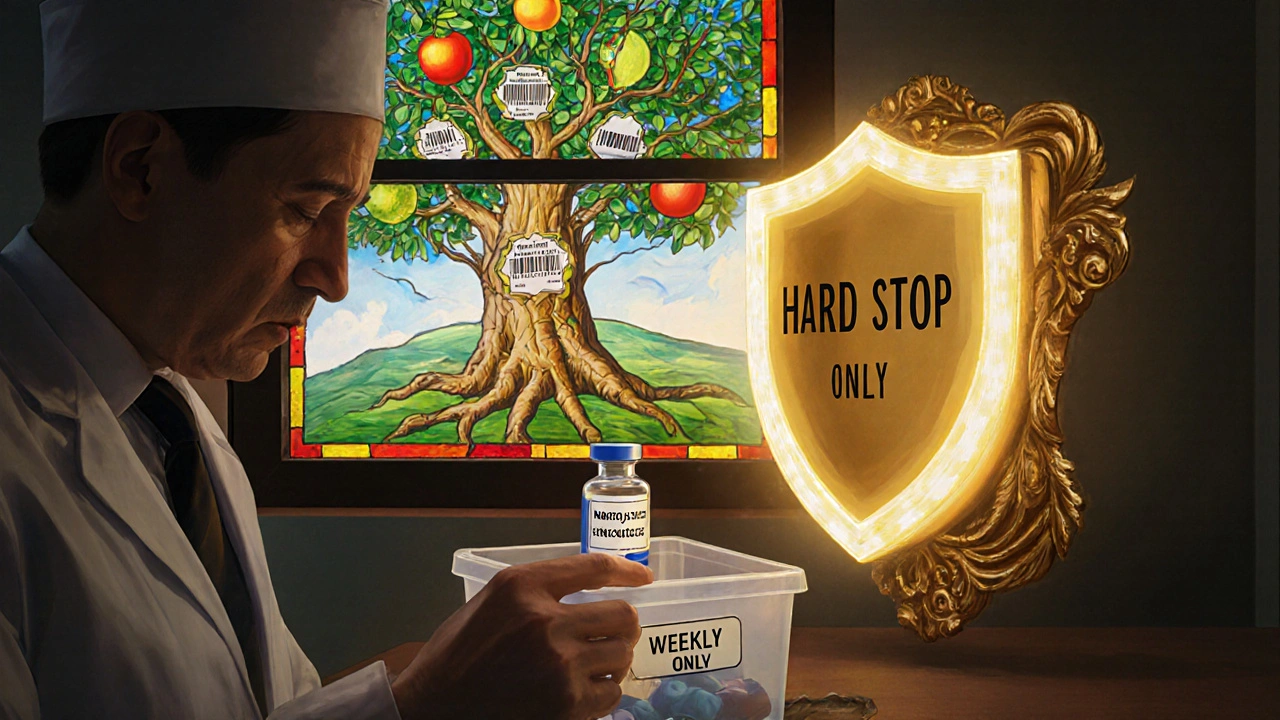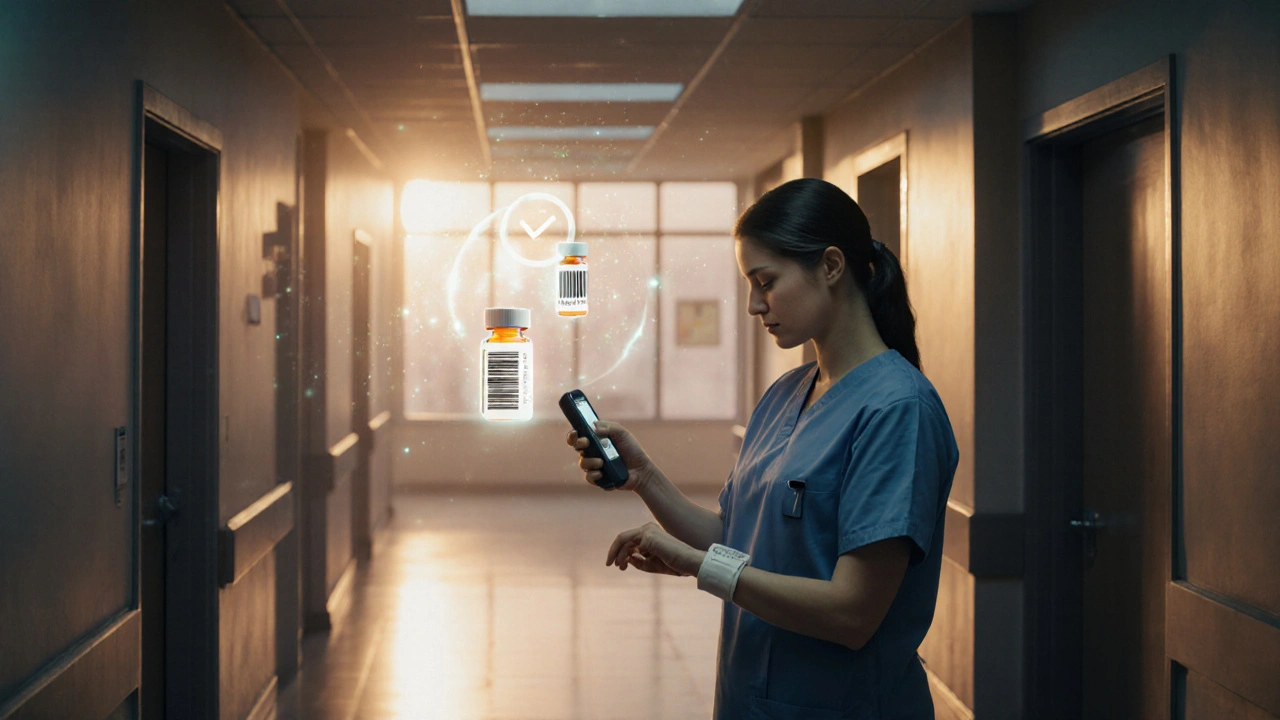Medication errors aren’t rare-they’re predictable, and they’re preventable.
In U.S. hospitals, at least one medication error happens per patient every day. That’s not a guess. That’s data from a landmark 1995 study by Dr. David Bates and colleagues. And while not all errors cause harm, about 400,000 preventable drug-related injuries occur in hospitals each year. Many of these stem from simple, avoidable mistakes: the wrong dose, the wrong drug, the wrong patient. The cost? Over $21 billion annually. The human toll? Thousands of lives lost or permanently altered.
But here’s the good news: we know how to stop most of these errors. The key isn’t more staff or longer shifts-it’s smarter systems. Hospitals and clinics that use proven safety practices see up to 55% fewer serious medication mistakes. It’s not magic. It’s structure.
What counts as a medication error?
The American Society of Health-System Pharmacists (ASHP) defines it clearly: any preventable event that leads to inappropriate medication use or patient harm while the drug is under the control of a healthcare provider, patient, or caregiver. That includes everything from prescribing the wrong drug to giving insulin to the wrong person. It even includes failing to warn a patient about a dangerous interaction.
Some errors are obvious-a nurse accidentally gives a patient 10 times the prescribed dose of morphine. Others are quiet, sneaky, and deadly. A patient gets daily methotrexate instead of weekly because the electronic system didn’t block it. A diabetic receives a vial of concentrated insulin labeled as regular. A senior citizen leaves the hospital with two conflicting blood thinner prescriptions. These aren’t hypotheticals. These are real cases tracked by the Institute for Safe Medication Practices (ISMP) over decades.
The ISMP Targeted Best Practices: A checklist that saves lives
In 2014, ISMP launched its Targeted Medication Safety Best Practices for Hospitals. The goal? Fix the most dangerous, most common mistakes. The 2020-2021 version includes 19 specific, non-negotiable practices. These aren’t suggestions. They’re mandatory for any hospital serious about safety.
One of the most critical? Preventing daily dosing of weekly methotrexate. Methotrexate is a powerful drug used for cancer, autoimmune diseases, and sometimes ectopic pregnancies. When given daily instead of weekly, it’s often fatal. In one hospital, a nurse accidentally ordered it daily for a rheumatoid arthritis patient. The system didn’t stop it. The patient suffered severe bone marrow suppression. She survived-but barely.
After implementing ISMP’s Best Practice #2, hospitals now require:
- A default weekly dosing schedule in the electronic health record (EHR)
- A hard stop that blocks daily orders unless the prescriber confirms an oncology diagnosis
- Verbal and written discharge instructions that explicitly state the dosing schedule
- Double-checking printed medication lists with patients before they leave
Since these changes, an estimated 1,200 serious methotrexate errors have been prevented each year, according to Dr. Robert Wachter of UCSF. That’s 1,200 families spared trauma.
High-alert medications: When the stakes are highest
Not all drugs are created equal. Some carry a much higher risk of harm if used incorrectly. ISMP and ASHP classify these as high-alert medications. They include:
- Insulin
- Opioids (like morphine, fentanyl)
- Anticoagulants (like warfarin, heparin)
- IV potassium chloride
- Neuromuscular blocking agents
- Intrathecal chemotherapy drugs (like vincristine)
For these drugs, safety protocols go beyond the norm. Hospitals must:
- Use independent double-checks before administration
- Standardize concentrations (e.g., no vials of 100 mg/mL insulin)
- Enable automated dose range alerts in EHRs
- Store them separately from other drugs
One ICU nurse on Reddit described a near-fatal error with a neuromuscular blocker. The patient was paralyzed but awake-unable to move or speak. The system didn’t flag the wrong dose. The team missed the double-check. The patient survived, but the trauma lingered. That’s why protocols matter. One missed step can cost everything.

Barcode scanning and electronic systems: Your digital safety net
Barcodes on medication labels and patient wristbands are now standard in most U.S. hospitals. When a nurse scans the patient’s wristband and the medication, the system checks: Is this the right drug? Right dose? Right time? Right patient?
Hospitals with full barcode medication administration (BCMA) systems see 40-50% fewer administration errors. But adoption isn’t universal. Only 54% of small hospitals (under 100 beds) use BCMA, compared to 89% of large ones. Why? Cost. Legacy EHR systems. Staff resistance.
Some hospitals work around these limits. Pharmacists manually verify high-risk orders until the system updates. Nurses use printed checklists as backup. These aren’t ideal-but they’re better than nothing.
Medication reconciliation: The bridge between care settings
One of the biggest dangers happens when patients move between settings-like from hospital to home, or from ER to inpatient unit. Their medication list changes. Someone forgets to update it. That’s where medication reconciliation comes in.
This isn’t just copying a list. It’s comparing the patient’s current home meds with what’s ordered in the hospital. Did they stop their blood pressure pill? Did the ER add a new antibiotic? Did the specialist change the dose? If you don’t reconcile, you risk dangerous interactions or missed treatments.
Joint Commission standards require hospitals to do this at every transition of care. But many still do it poorly. A 2022 study found that 30% of patients had at least one uncorrected discrepancy in their medication list after discharge.
Successful reconciliation means pharmacists are involved. Nurses ask patients: “What meds do you take at home?” And they verify with the pharmacy, not just the patient’s word.
Why do safety systems fail-even when they exist?
It’s not that hospitals don’t know what to do. It’s that implementation is messy.
Many EHR vendors won’t build hard stops for high-risk drugs without extra fees. Staff get overwhelmed. A nurse in a rural hospital posted on the American Nurses Association forum: “We’re short-staffed. Requiring both written and verbal methotrexate instructions takes 20 extra minutes per patient. We can’t do it without cutting other care.”
Another problem? Fragmentation. ISMP’s best practices are detailed. The Joint Commission’s standards are broad. CMS ties payments to outcomes. Hospitals are told to follow all of them-and they don’t always align. Dr. David Bates calls this “implementation fatigue.” Frontline staff get burned out trying to juggle conflicting rules.
And then there’s culture. Safety isn’t just about technology. It’s about speaking up. If a nurse sees a mistake but doesn’t say anything because they fear being yelled at, the system fails. The best safety programs build psychological safety-where asking, “Wait, is this right?” is encouraged, not punished.

What’s changing in 2025?
Medication safety isn’t standing still. New developments are pushing the field forward:
- The FDA now requires clearer labeling for high-concentration electrolytes like potassium and sodium chloride. Full compliance is due by December 31, 2024.
- ISMP is expanding its Targeted Best Practices to include outpatient clinics in 2024-2025, responding to a 40% rise in community-based medication errors since 2019.
- AHRQ’s National Action Plan aims to cut opioid-related adverse events by 50% by 2027.
- AI is starting to play a role. By 2025, 75% of U.S. hospitals are expected to use AI tools that flag potential errors in real time-up from just 22% in 2022.
- Pilot programs at Mayo Clinic and Johns Hopkins are testing patient-reported feedback as a safety tool. Patients text updates about side effects or confusion-and the system alerts clinicians. Early results show a 32% increase in error detection.
What patients can do to protect themselves
You’re not powerless. Even the best systems rely on human checks. Here’s what you can do:
- Keep a current list of all your meds-including supplements and over-the-counter drugs. Bring it to every appointment.
- Ask: “What is this medicine for? What are the side effects? What happens if I miss a dose?”
- Before any medication is given, confirm your name and birth date. Don’t assume the staff already knows.
- When you’re discharged, get a printed list of your meds and compare it to what you were taking before.
- If something feels wrong-like a pill that looks different-speak up.
A 2022 survey by the National Council on Aging found that 68% of seniors felt safer when hospitals used the “Right Patient Check”-verifying name, birth date, and wristband before giving any drug. That’s not just policy. That’s power.
The bottom line: Safety is a system, not a slogan
Medication safety isn’t about blaming nurses or pharmacists. It’s about designing systems so human error doesn’t lead to tragedy. It’s about hard stops, barcodes, double-checks, clear labeling, and a culture where asking questions is normal.
The tools exist. The data proves they work. The cost of inaction-both financial and human-is too high to ignore. Whether you’re a clinician, administrator, or patient, your role matters. Because in medication safety, no one is just a bystander.

